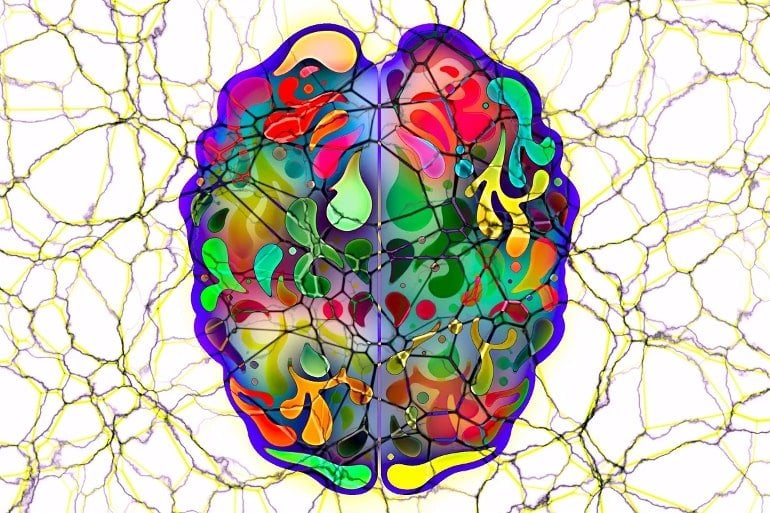Summary: A new study expands the understanding of how brain cells communicate. Researchers discovered reversing the modification of molecular messages at the synapse may contribute to reversible psychiatric disorders and early-stage neurodegenerative diseases.
Source: University of Nottingham
Experts from the University of Nottingham have discovered that reversing the modification of molecular messages at synapses in the human brain, may contribute to reversible mental health conditions such as anxiety, and memory diseases such as dementia.
The findings, published in Molecular Psychiatry, are a major step in our understanding how brain cells communicate, and could help to identify new treatments for neurological and psychiatric conditions.
The research was led by Dr Helen Miranda Knight in the School of Life Sciences at the University of Nottingham, along with researchers across the Schools of Medicine, Life Science, and Bioscience.
It was conducted using the University of Nottingham’s state-of-the-art Deep seq, SLIM microscopy, and, Nanoscale and Microscale Research Centre facilities.
Nerve cells in the human brain talk to one another at sites called synapses, where molecules are released to signal to the next cell. When people learn or remember things, this signalling is strengthened. When communication between synapses goes wrong, circuits become broken.
As more circuits are lost, this changes how people can think and perform everyday tasks. This is seen in cognitive disorders, such as forms of dementia and some mental health conditions.
The function of nerve cells and synapses depends on proteins that are made using information encoded in genetic material called RNA. It is thought that RNAs are located exactly where and when they are needed for synaptic signalling because some kind of synaptic ‘tag’ labels the correct active synapse.

Scientists have recently learned that RNA can have a methyl group/molecule added to one of the RNA bases which ‘marks’ the RNA message. Such adding of methyl groups can influence proteins binding to DNA or RNA and consequently stop proteins being produced.
This new study shows that RNA marking can be reversed at synapses and hence may act as a ‘synaptic tag’. The findings suggest, that if disrupted, this could cause synapses and nerve cells to malfunction by influencing the formation of toxic protein clumps.
The researchers used advanced microscopy to examine changes in marked RNAs in time and location at synapses, and a sequencing technique to characterise ‘marked’ RNAs in brain tissue from the hippocampus, a region of the brain very important for memory formation.
Dr Knight said: “In this new study, we are able to gain a new understanding of the genomic mechanisms which regulate how nerve cells communicate at synapses. These genomic mechanisms involve methyl groups being put on RNA messages and importantly taken off when a synapse is active. The implications are very important for normal brain function but also for reversible psychiatric mental conditions such as anxiety and addiction disorders and early-stage neurodegenerative diseases such as dementias.”
About this neuroscience research news
Author: Press Office
Source: University of Nottingham
Contact: Press Office – University of Nottingham
Image: The image is in the public domain
Original Research: Open access.
“Modifying the m6A brain methylome by ALKBH5-mediated demethylation: a new contender for synaptic tagging” by Braulio Martinez De La Cruz, Robert Markus, Sunir Malla, Maria Isabel Haig, Chris Gell, Fei Sang, Eleanor Bellows, Mahmoud Awad Sherif, Denise McLean, Anbarasu Lourdusamy, Tim Self, Zsuzsanna Bodi, Stuart Smith, Michael Fay, Ian A. Macdonald, Rupert Fray, Helen Miranda Knight. Molecular Psychiatry
Abstract
Modifying the m6A brain methylome by ALKBH5-mediated demethylation: a new contender for synaptic tagging
Synaptic plasticity processes, which underlie learning and memory formation, require RNA to be translated local to synapses. The synaptic tagging hypothesis has previously been proposed to explain how mRNAs are available at specific activated synapses. However how RNA is regulated, and which transcripts are silenced or processed as part of the tagging process is still unknown. Modification of RNA by N6-methyladenosine (m6A/m) influences the cellular fate of mRNA.
Here, by advanced microscopy, we showed that m6A demethylation by the eraser protein ALKBH5 occurs at active synaptic ribosomes and at synapses during short term plasticity. We demonstrated that at activated glutamatergic post-synaptic sites, both the YTHDF1 and YTHDF3 reader and the ALKBH5 eraser proteins increase in co-localisation to m6A-modified RNAs; but only the readers showed high co-localisation to modified RNAs during late-stage plasticity.
The YTHDF1 and YTHFDF3 readers also exhibited differential roles during synaptic maturation suggesting that temporal and subcellular abundance may determine specific function. m6A-sequencing of human parahippocampus brain tissue revealed distinct white and grey matter m6A methylome profiles indicating that cellular context is a fundamental factor dictating regulated pathways.
However, in both neuronal and glial cell-rich tissue, m6A effector proteins are themselves modified and m6A epitranscriptional and posttranslational modification processes coregulate protein cascades. We hypothesise that the availability m6A effector protein machinery in conjunction with RNA modification, may be important in the formation of condensed synaptic nanodomain assemblies through liquid-liquid phase separation.
Our findings support that m6A demethylation by ALKBH5 is an intrinsic component of the synaptic tagging hypothesis and a molecular switch which leads to alterations in the RNA methylome, synaptic dysfunction and potentially reversible disease states.







